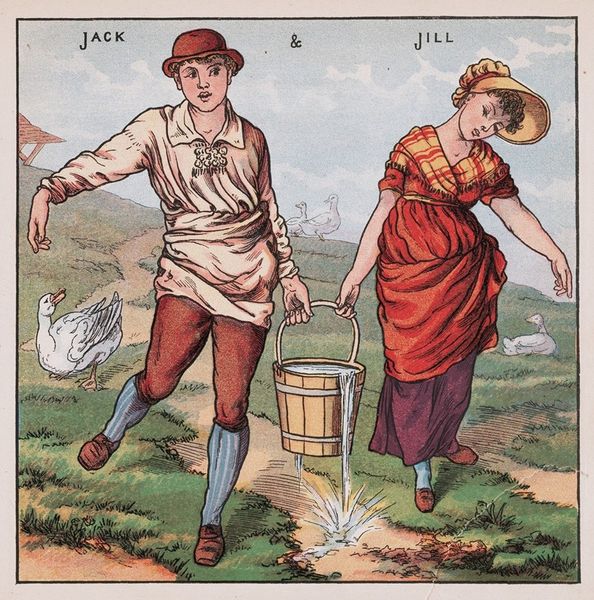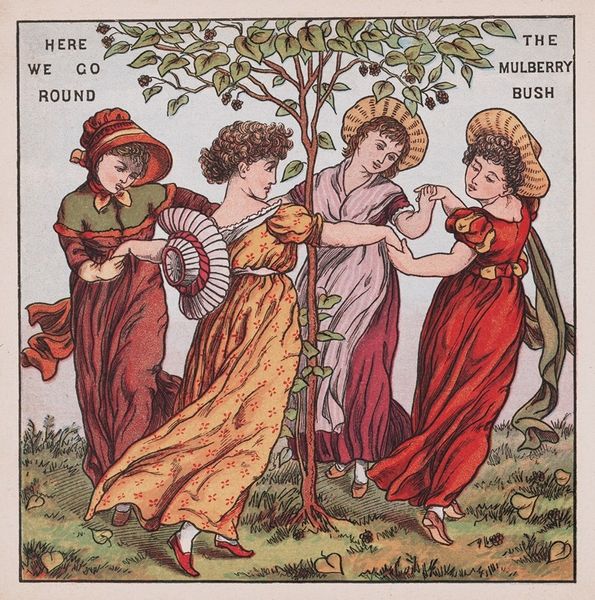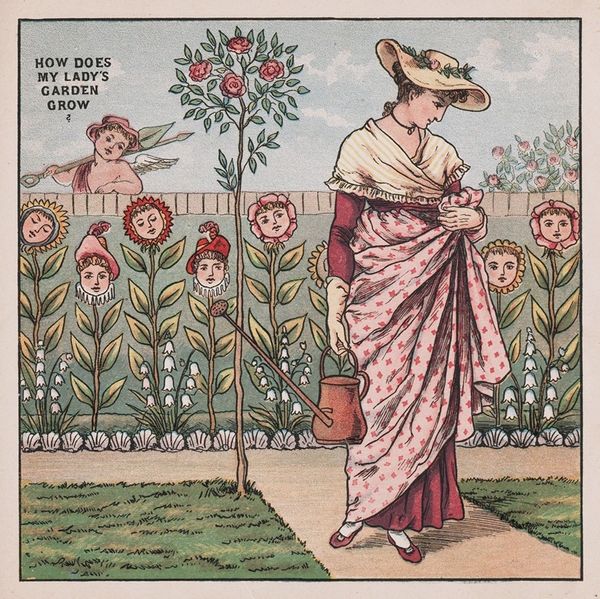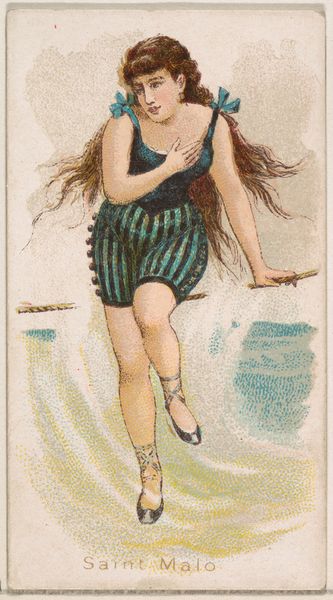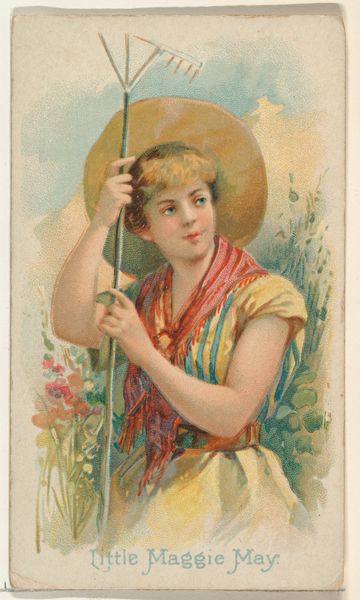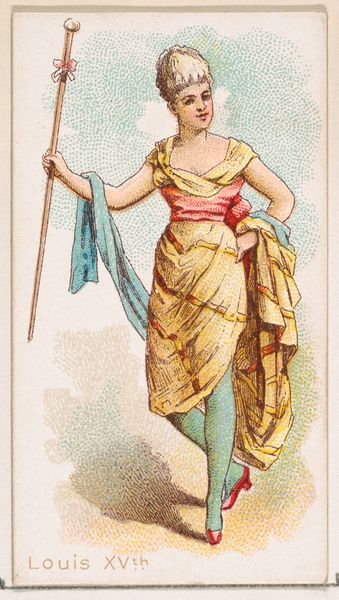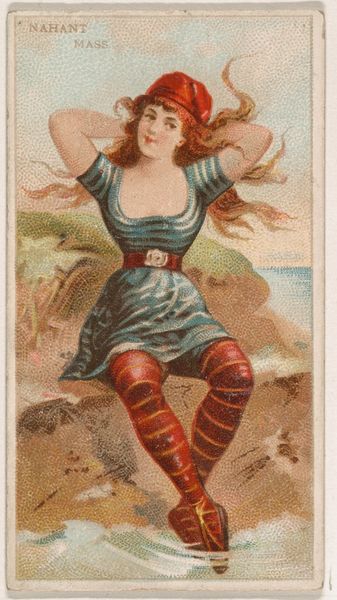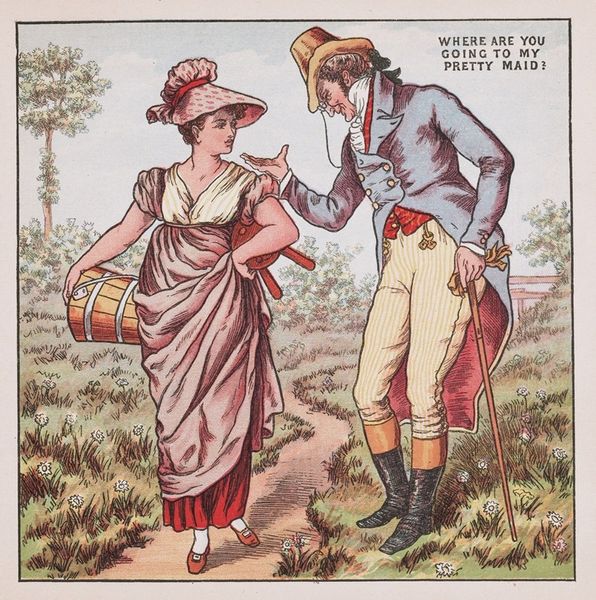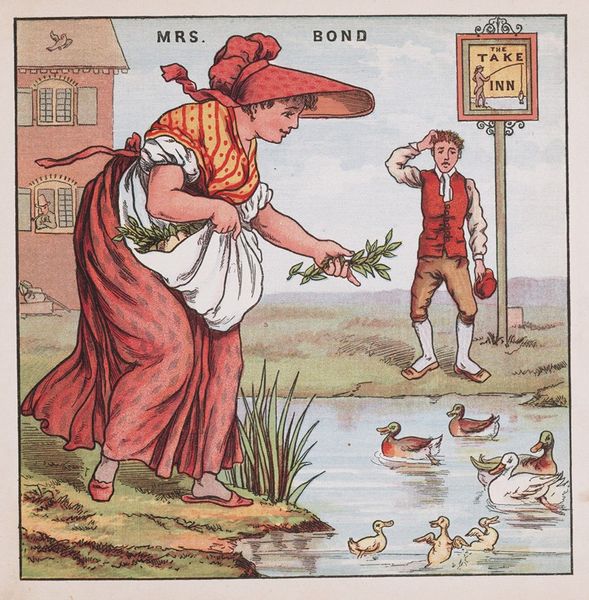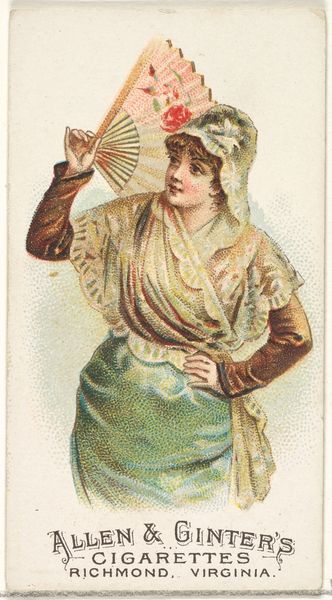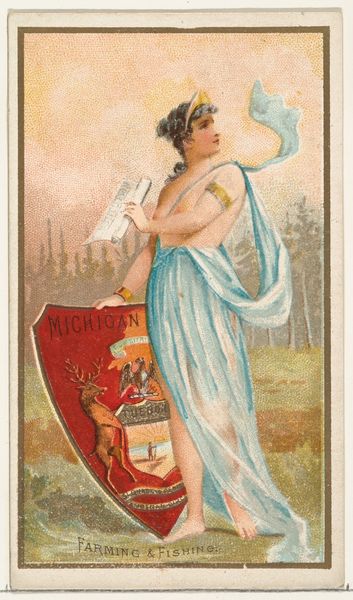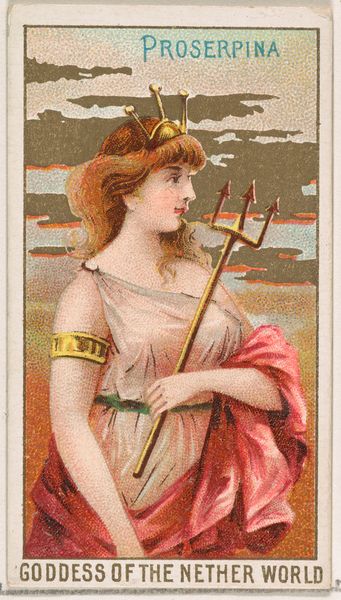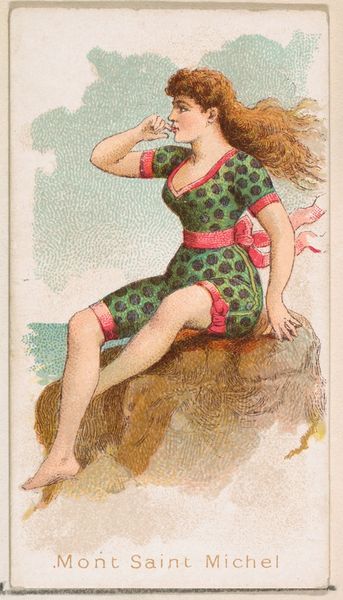
Copyright: Public Domain: Artvee
Editor: So, here we have Walter Crane's "Little Bo-Peep" from 1877. It's an illustration, I think. She seems very determined, almost searching…but there’s also a quietness to the whole scene. How do you interpret this work? Curator: Well, first, I see this not just as an innocent nursery rhyme illustration, but as a commentary on the expectations and limitations placed on women during the late 19th century. Consider Bo-Peep, perpetually searching for her lost sheep. Isn’t this analogous to women's limited roles, forever seeking fulfillment within a patriarchal structure that often left them feeling lost? Editor: That’s… quite a different take than I expected! I guess I saw her quest more literally. Curator: Look at the way Crane depicts her, though. She's not simply a passive figure. There’s a strength in her gaze, even in her apparent ‘lostness’. Does it make you consider whether she might be looking for something beyond her lost flock? Perhaps searching for a sense of self, an escape from those restrictive roles? The staff she carries becomes almost a symbol of self-reliance. Editor: I see what you mean. The landscape too… it’s pretty, but vast and maybe a little lonely? Curator: Exactly! The landscape amplifies her isolation, and mirrors a society that often isolated women from public life. Now, does knowing this perhaps reframe how you perceive the fairytale genre at the time? Editor: Absolutely. I'll never look at nursery rhymes the same way again. It’s incredible to consider these subtle messages woven into what seemed like a simple story. Curator: It’s these hidden dialogues that make art so engaging – always speaking to our present from the past.
Comments
No comments
Be the first to comment and join the conversation on the ultimate creative platform.
